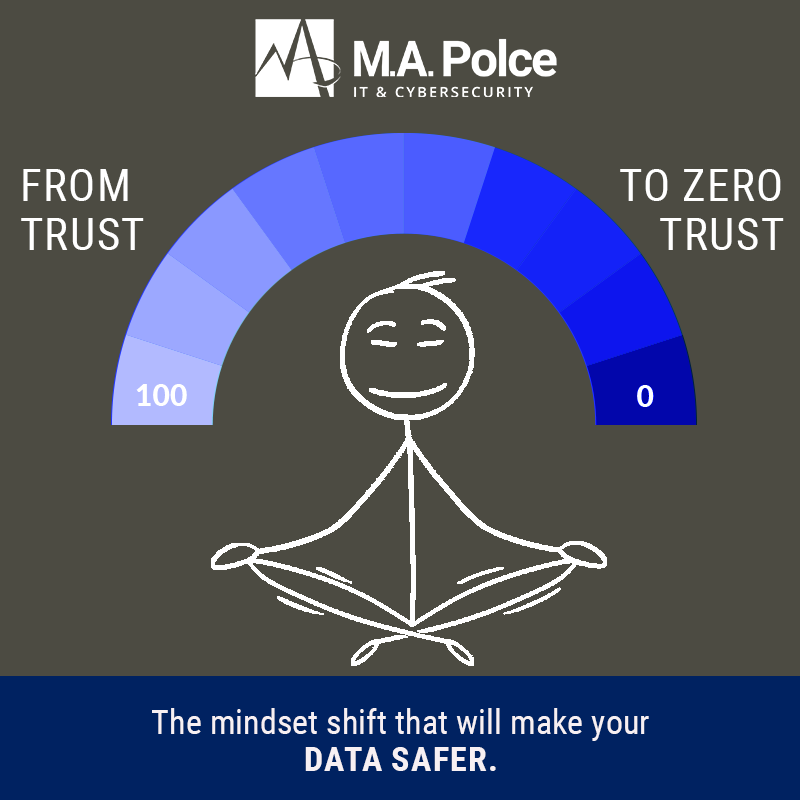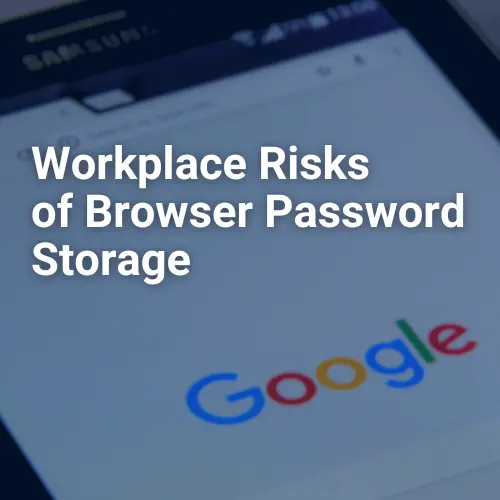Cybersecurity is top of mind for many business and cyber leaders. According to World Economic Forum’s Global Cybersecurity Outlook 2023, 43% of organizational leaders believe it’s highly likely that a cyber attack will impact their business within the next few years.
These concerns coincide with global geopolitical uncertainty and the increasing number of cyber threats affecting businesses of all sizes. New research indicates a 38% boost in global attacks between 2021 and 2022. In addition to more cyber attacks, organizations must navigate the mounting complexity of these threats.
This tumultuous cybersecurity environment has stressed the importance of zero trust framework, an approach to securing data through authorized access. Discover the benefits of a zero trust framework and how to employ it from M.A. Polce.
The Limitations of Traditional Security Models
Part of why zero trust frameworks have gained traction is because of the shortcomings of traditional security models. The primary approach was the perimeter strategy, sometimes called the castle-and-moat method. This model focused on protecting network perimeters against those outside the business while giving internal teams relatively free reign.
The biggest flaw with this model is the implicit trust in internal users. It doesn’t account for insider threats or the possibility that external cybercriminals can disguise themselves as employees to gain network access. A report from Cybersecurity Insiders finds that 60% of security professionals say they encountered an insider attack in 2022, revealing the perimeter model is ineffective at protecting systems.
Modern concerns with IT architecture have also made traditional security insufficient. For example, the growth of cloud computing and endpoint devices has required users outside of the business to access networks. Such changes mean companies can no longer rely only on perimeter defenses for cybersecurity.
The Benefits of a Zero Trust Framework
Assume nothing and verify everything — this is the essence of the zero trust framework. This approach follows the notion that no user or device has the implicit trust to prevent unauthorized access to networks and data. It assumes the lowest trust and grants users access according to their identities and roles. Access changes gradually as users’ responsibilities evolve.
The tools, technologies, and procedures that constitute a zero trust framework all contribute to a more data-centric approach to cybersecurity. The following are some advantages of the zero trust model:
- Safeguards sensitive information
- Reduces the risk of breaches
- Shortens detection time
- Delivers enhanced visibility into network traffic
- Offers better control in cloud environments
- Supports compliance auditing
- Prohibits threats from moving laterally throughout the organization (micro-segmentation)
Implementing a Zero Trust Framework
The right zero trust framework is comprehensive, addressing the various elements of cybersecurity to allow for transformational change. While your framework will be unique to your business and needs, the following four steps represent a general structure for implementation:
- Identify which users and devices are authorized to connect to which networks to establish a baseline.
- Create access controls for various applications, services, networks, and files
- Set up tools that can continuously check on network and device activity
- Assess remote access to confirm the proper level of authentication and security
As with any new security strategy, you may encounter challenges on the path to zero trust. Potential obstacles to consider include:
- Compatibility with existing technology: Older systems may not have the resources to support zero trust architecture.
- Lack of buy-in from staff: Leaders can face pushback from employees about the new security model. Training users on the value of a zero trust framework can facilitate more acceptance of the change.
- Financial investment: Adopting a zero trust model may require the business to update existing technologies, which can be costly.
The zero trust framework is wide in scope and can be complicated for businesses at first. While a piecemeal approach can leave security gaps, leaders are encouraged to proceed in steps. For example, they can think about what to do weekly to promote better zero trust cybersecurity.
The Role of Zero Trust Frameworks in Data Privacy and Compliance
Zero trust also has significant implications for data privacy and compliance. Various regulations dictate how industries should handle data, such as General Data Protection Regulation (GDPR) and California Consumer Privacy Act (CCPA). Data privacy policies help businesses adhere to these regulations and avoid legal trouble, but most importantly decrease cybersecurity incidents that may compromise confidential data.
By increasing the protection of sensitive data, a zero trust framework inherently augments data privacy and compliance. Many companies follow the maturity model outlined by United States Cybersecurity and Infrastructure Security Agency (CISA), which includes five pillars — identity, device, network, application workload, and data.
While some models contain additional pillars, the basic idea is to foster zero trust throughout the enterprise environment. This strengthens data privacy policies, enabling better assessment and compliance to provide peace of mind for customers and employees.
The Evolution of the Zero Trust Framework
Since first introduced in 2010 by Forrester analyst John Kindervag, zero trust has continued to evolve. Adoption has grown considerably, with a recent report from Okta finding that 97% of organizations surveyed plan to implement a zero trust policy in the next year, and 55% already have one in place.
A major trend in zero trust is the push toward data-centric security. The goal is to enhance granularity by looking beyond identities and roles to ensure authentication and authorization for any type of access to any resource. The future may hold a shift toward a zero trust data access model.
Employ Zero Trust to Reinforce Cybersecurity
With the growing prevalence of cyber threats, cybersecurity is becoming more and more critical to business success. To effectively leverage a zero trust framework, companies must think beyond technological implementation to their overall philosophy, fostering a culture where zero trust is the norm.
Embrace the future of cybersecurity with zero trust – a paradigm that redefines protection in an ever-shifting digital landscape. M.A. Polce offers proactive cybersecurity and IT solutions, including implementing a zero trust network architecture tailored to your needs. Don’t wait for breaches to strike; partner with M.A. Polce now to fortify your defenses and secure a safer digital future. Contact us today and step into a new era of cybersecurity.
Sources
https://www.csoonline.com/article/3247848/what-is-zero trust-a-model-for-more-effective-security.html
https://www.techtarget.com/searchsecurity/definition/zero trust-model-zero trust-network
https://legal.thomsonreuters.com/en/insights/articles/understanding-data-privacy-a-compliance-strategy-can-mitigate-cyber-threats
https://www.simplelegal.com/blog/data-compliance-regulations
https://www.securityweek.com/history-and-evolution-zero trust/




